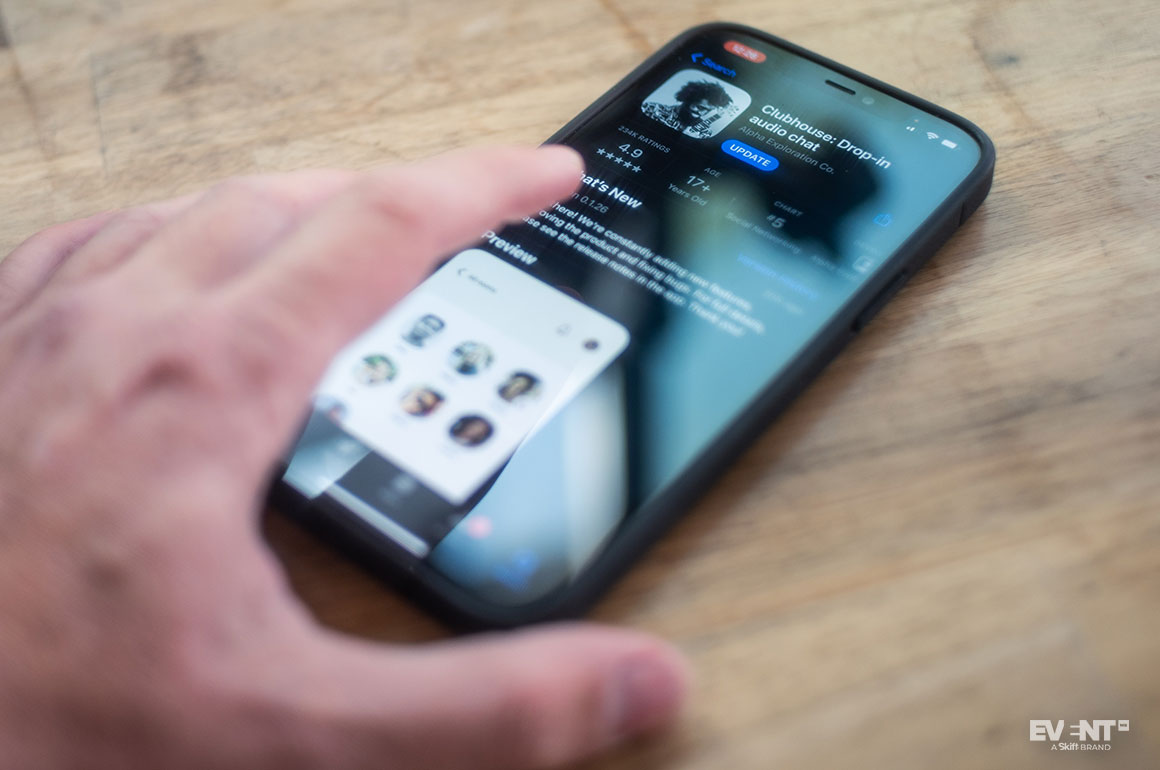The pandemic forced video conferencing and virtual events on most of the world last year, but a new format has been gaining steam: audio-only. Perhaps the most notable example of this is the rapid growth of Clubhouse, which reached 10 million active weekly users as of February and is now valued at $4 billion following its latest funding round. Clubhouse has become the poster child for audio-only group meeting tools, which Sensor Tower reports have experienced a huge surge this year to the tune of 20 million downloads.
At first glance, Clubhouse looks like a glorified multi-line phone call, but it has achieved this major popularity despite serious, frustrating limitations: it’s invite-only, it’s currently only available on iOS devices, and, of course, it’s audio only.
However, the desire for audio-only content shouldn’t come as a huge surprise given that podcast popularity is at an all-time high; 80 million Americans now listen to podcasts each week. Clubhouse is just the first major platform to capitalize on that clear demand, but others are quickly starting to take notice.
What’s the Appeal of Audio-Only?
It’s easy to see why more and more people may be looking for audio-only options to consume content. Most of us have spent the last year glued to our computer screens for everything from team meetings to happy hours, leading to what we all now know as Zoom fatigue.
By contrast, audio-only features don’t require you to be on camera or focus on a screen for extended periods of time. You join interactive conversations while you multitask, and they’re extremely mobile-friendly (at least for users on iOS), meaning you can also easily take them on the go.
Audio-only clearly isn’t a replacement for other formats, but it can be a viable alternative to video in certain contexts, and it ultimately gives users/attendees even more choice when it comes to how they consume content.
The Proliferation of Audio Features
The success of Clubhouse has led other social media and event tech platforms to introduce their own audio-only features in recent weeks. Swapcard, for example, recently released audio-only roundtables, which are essentially Clubhouse-style rooms where “attendees can chat with one another in a large conference call using audio only.” Office communication and collaboration tool Orbital is also centred around audio communication based on a virtual interface that is meant to mimic physical proximity.
Facebook has similarly been investing in audio-only features, and will soon be testing Live Audio Rooms for its Groups. It is also developing a new feature called Soundbites, which will be like Reels on Instagram but for short audio clips instead of videos.
Meanwhile, Instagram now supports audio-only livestreams, and Twitter has been beta testing its new Spaces feature, which will enable users with at least 600 followers to host and join audio chat rooms on the app. It’s even developing ticketing to allow content creators to monetize the experience.
Accessibility Concerns
While audio-only options are undoubtedly popular and may be a great option for some, it’s important to note that they are also less accessible. In the case of Clubhouse and similar audio-only features, people who are hard of hearing or deaf are excluded from the conversations due to the lack of text chat and/or captioning.
Planners who are looking to make their events as accessible as possible should keep this in mind when considering audio-only options.
IN CONCLUSION
Audio-only features provide a different, and often more convenient, way for people to engage with content. They have been a welcome change for many after a year of video meetings and gatherings, with apps like Clubhouse growing fast.
If this trend continues, we can likely expect more audio-only features to be added to event platforms in an effort to combat video fatigue and to provide attendees with more options for how they want to engage with the event.





